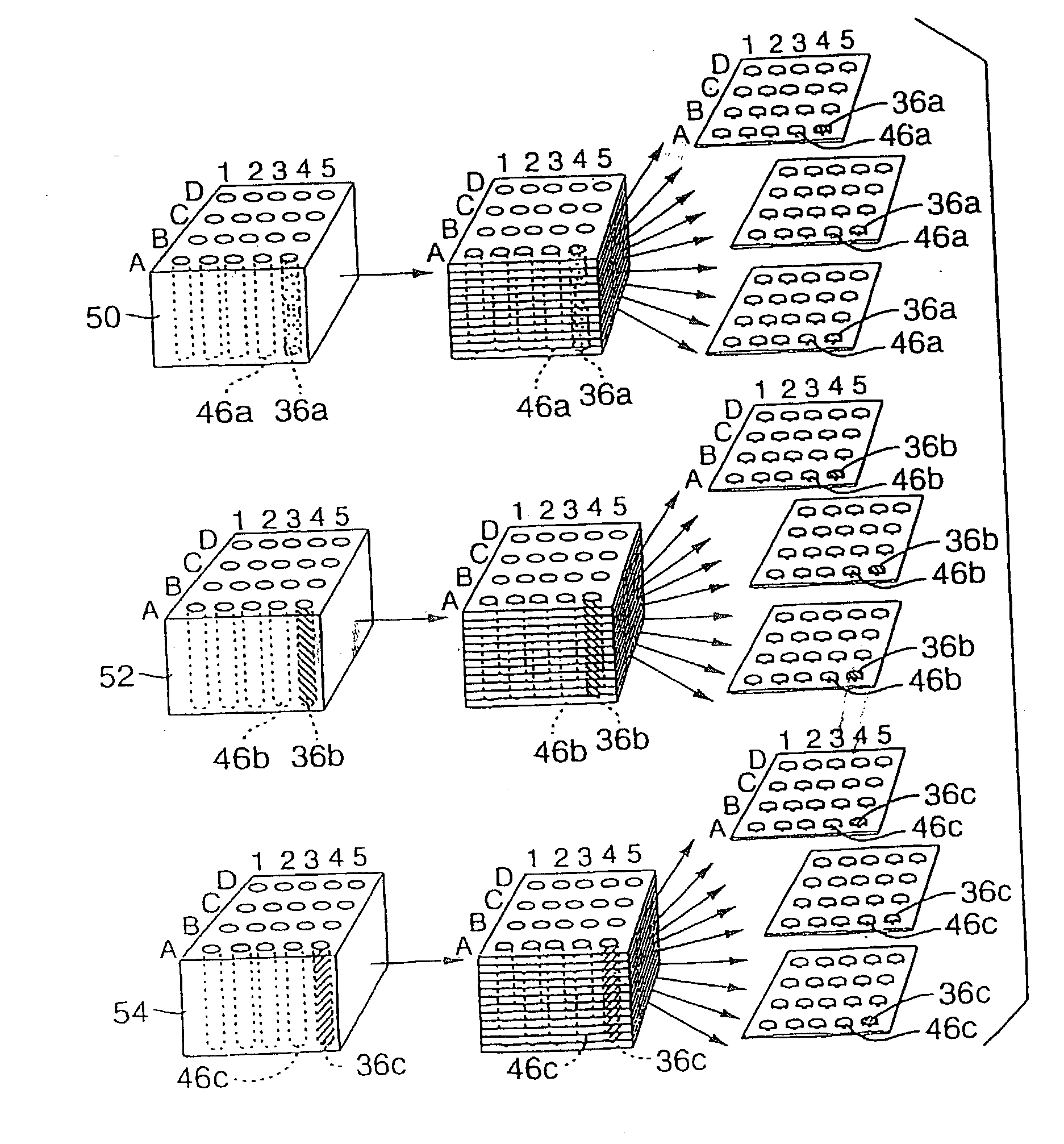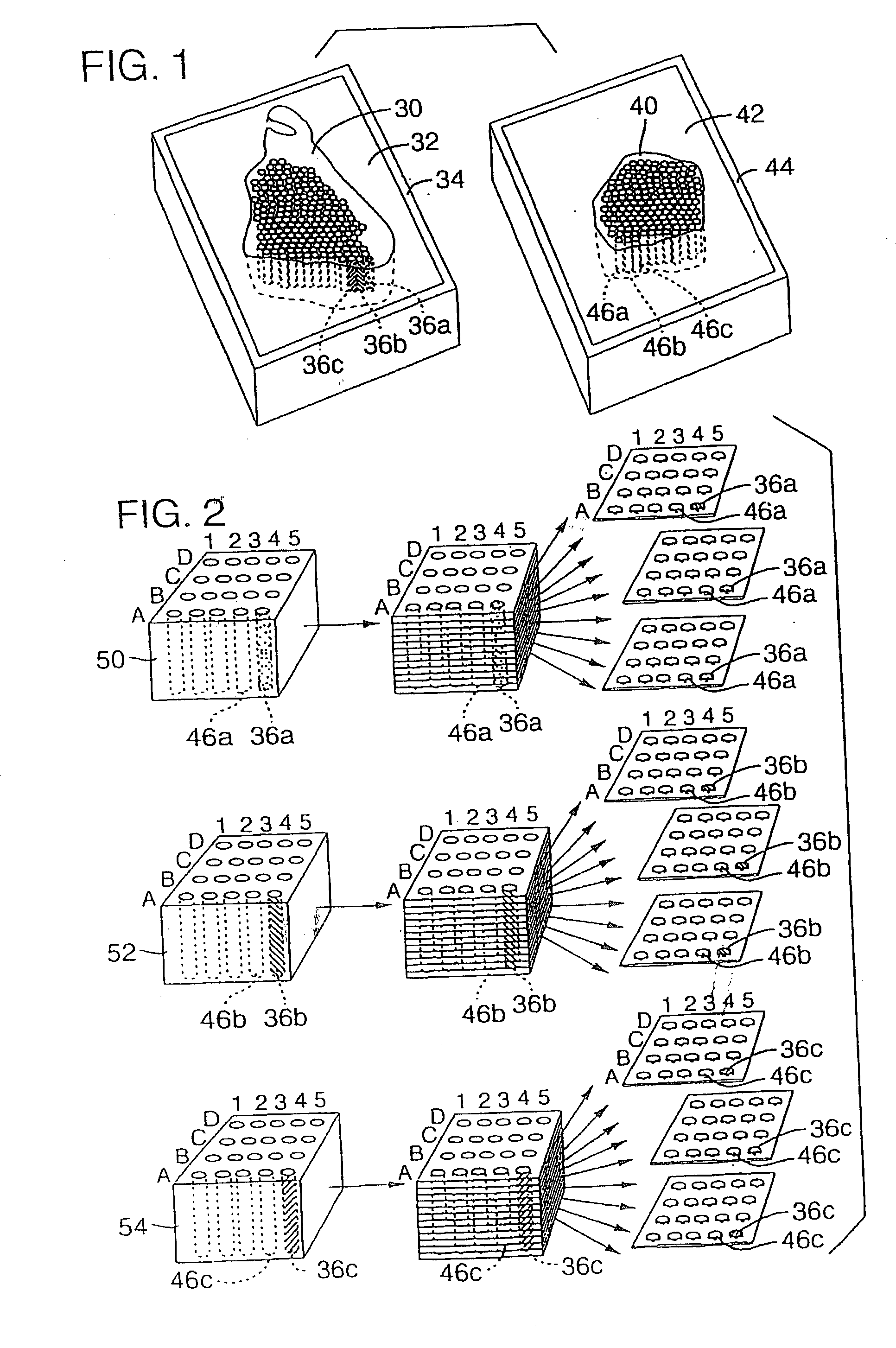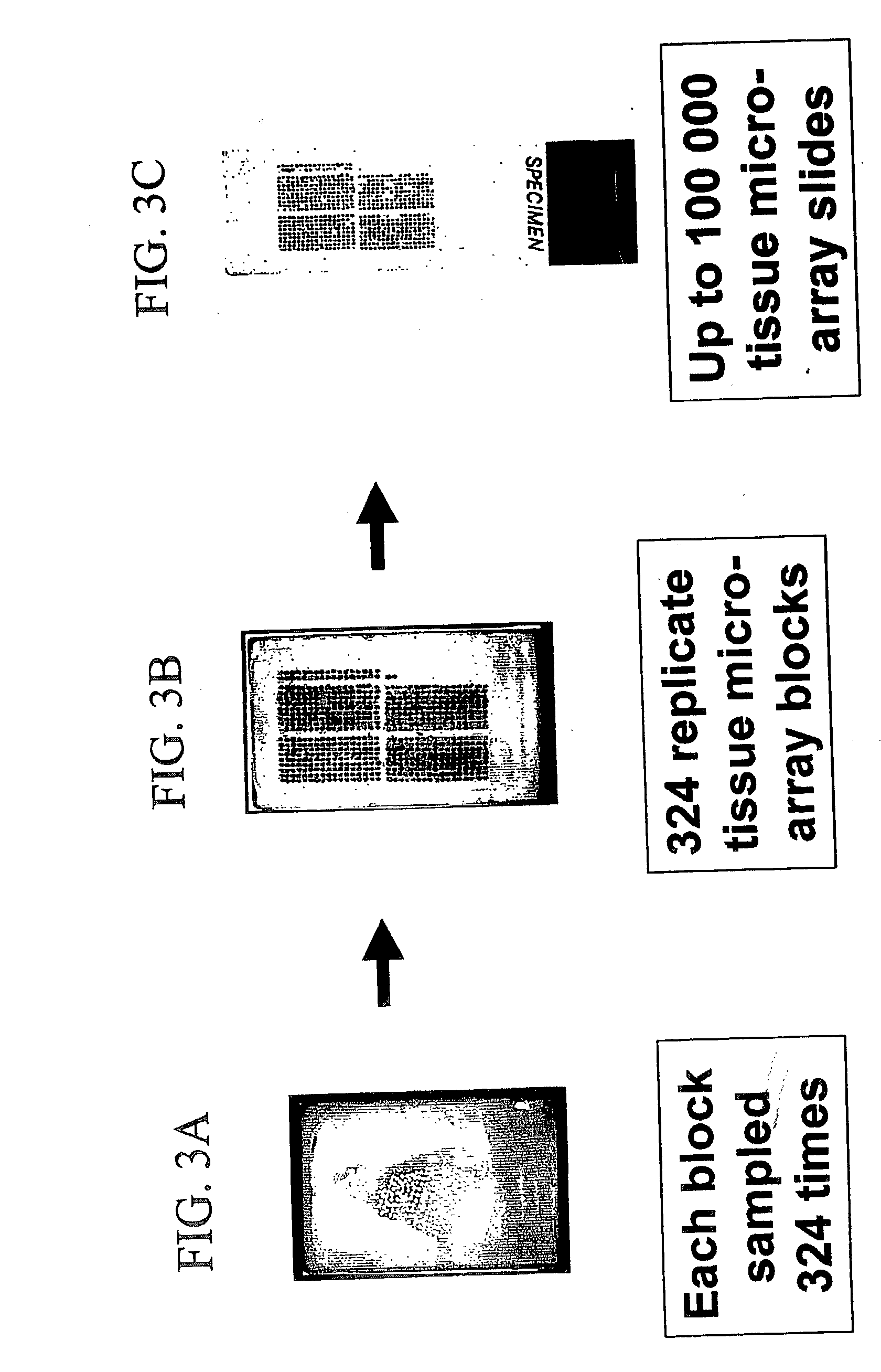High-throughput tissue microarray technology and applications
a tissue microarray and high-throughput technology, applied in the field of high-throughput tissue microarray technology and applications, can solve the problems of limited development of such methods, lack of progress, and limited information regarding the molecular mechanisms of disease in cellular morphology, and achieve the effect of better comparison
- Summary
- Abstract
- Description
- Claims
- Application Information
AI Technical Summary
Benefits of technology
Problems solved by technology
Method used
Image
Examples
example 1
[0238] Tissue Specimens
[0239] A total of 645 breast cancer specimens is used for construction of a breast cancer tumor tissue microarray. The samples include 372 fresh-frozen ethanol-fixed tumors, as well as 273 formalin-fixed breast cancers, normal tissues and fixation controls. The subset of frozen breast cancer samples is selected at random from the tumor bank of the Institute of Pathology, University of Basel, which includes more than 1500 frozen breast cancers obtained by surgical resections during 1986-1997. This subset is reviewed by a pathologist, who determines histological characteristics of the specimens. Other clinical information about the patients is also obtained (such as whether they have undergone chemotherapy, and what clinical stage of disease they had, as well as node status at the time of surgical resection). All previously unfixed tumors are fixed in cold ethanol at +4.degree. C. overnight and then embedded in paraffin.
example 2
[0240] Immunohistochemistry
[0241] After formation of the array and sectioning of the donor block, standard indirect immunoperoxidase procedures are used for immunohistochemistry (ABC-Elite, Vector Laboratories). Monoclonal antibodies from DAKO (Glostrup, Denmark) are used for detection of p53 (DO-7, mouse, 1:200), erbB-2 (c-erbB-2, rabbit, 1:4000), and estrogen receptor (ER ID5, mouse, 1:400). A microwave pretreatment is performed for p53 (30 minutes at 90.degree. C.) and erbB-2 antigen (60 minutes at 90.degree. C.) retrieval. Diaminobenzidine is used as a chromogen. Tumors with known positivity are used as positive controls. The primary antibody is omitted for negative controls. Tumors are considered positive for ER or p53 if an unequivocal nuclear positivity was seen in at least 10% of tumor cells. The erbB-2 staining is subjectively graded into 3 groups: negative (no staining), weakly positive (weak membranous positivity), strongly positive (strong membranous positivity).
example 3
[0242] Fluorescent In Situ Hybridization (FISH)
[0243] Two-color FISH hybridizations are performed using Spectrum-Orange labeled cyclin D1, myc or erbB2 probes together with corresponding FITC labeled centromeric reference probes (Vysis). One-color FISH hybridizations are done with spectrum orange-labeled 20q13 minimal common region (Vysis, and see Tanner et al., Cancer Res. 54:4257-4260 (1994)), mybL2 and 17q23 probes (Barlund et al., Genes Chrom. Cancer 20:372-376 (1997)). Before hybridization, tumor array sections are deparaffinized at reagent station 110, air dried and dehydrated in 70, 85 and 100% ethanol followed by denaturation for 5 minutes at 74.degree. C. in 70% formamide-2.times.SSC solution. The hybridization mixture includes 30 ng of each of the probes and 15 .mu.g of human Cot1--DNA. After overnight hybridization at 37.degree. C. in a humidified chamber, slides are washed and counterstained with 0.2 .mu.M DAPI in an antifade solution. FISH signals are scored with double...
PUM
| Property | Measurement | Unit |
|---|---|---|
| diameter | aaaaa | aaaaa |
| diameter | aaaaa | aaaaa |
| diameters | aaaaa | aaaaa |
Abstract
Description
Claims
Application Information
 Login to View More
Login to View More - R&D
- Intellectual Property
- Life Sciences
- Materials
- Tech Scout
- Unparalleled Data Quality
- Higher Quality Content
- 60% Fewer Hallucinations
Browse by: Latest US Patents, China's latest patents, Technical Efficacy Thesaurus, Application Domain, Technology Topic, Popular Technical Reports.
© 2025 PatSnap. All rights reserved.Legal|Privacy policy|Modern Slavery Act Transparency Statement|Sitemap|About US| Contact US: help@patsnap.com



